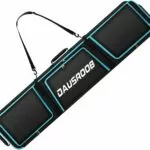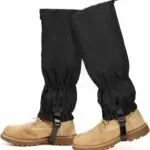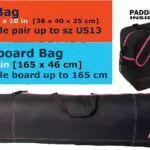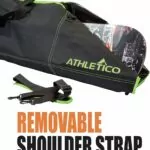Among the vast array of equipment needed for snow sports, goggles play a critical role. Yet, when you’re standing in a sports store, you might find yourself puzzled over whether to get ski goggles or snowboard goggles. You may ponder, ponder if there’s really a difference, or if they are one and the same. Through this article, you’ll gain insights into the distinctive features of both ski and snowboard goggles, and find out whether they’re interchangeable or unique to each sport. It’s time to clear up this snowy dilemma once and for all.
Primary Functions of Goggles
As an outdoor enthusiast, it’s important that you understand the primary functions of goggles. These crucial pieces of gear are the third eye for outdoor sports and their importance cannot be overemphasized.
Protection from Elements
The most important reason to wear goggles is to protect your eyes from elements. Think about airborne snow, wind, and harmful UV rays from the sun. These can all impair your vision and potentially harm your eyes in extremes of weather. Regular exposure to these elements can cause conditions such as snow blindness, icy wind burn, and can trigger vision impairments. With a good pair of goggles on, you can enjoy your sports without worrying about your eyes.
Enhancing visibility
Arguably, this isn’t just function, it’s a superpower. Imagine being on a slope during a snowfall or in glaring sunlight. Visibility can be a major challenge in these conditions. Goggles increase contrast and brightness, allowing you to see clearer and appreciate the landscape better.
Safety from injuries
Snow sports can be full of thrills and frills, but also spills. Falling face-first or slamming into tree branches happens more frequently than many care to admit. In these instances, goggles serve as a protective shield against possible eye injuries, bruises, and scrapes.
Basic Design and Structure
Now that we’ve covered the primary functions of goggles, let’s discuss their basic design and structure.
Shape of the Goggles
The shape of goggles is more than just aesthetic. They are carefully engineered to give you the best fit while optimizing visibility. Most goggles have a curved design that wraps around your face. This enhances peripheral vision, an essential feature since you’ll be moving very fast and need to be aware of your surroundings.
Materials Used
Materials used in making goggles are picked for durability, comfort, and most importantly, safety. The lens, usually made of high-quality polycarbonate or propionate, is designed to withstand impact. The frame, often crafted from flexible polyurethane, allows the goggles to retain their shape despite the cold. The strap is typically elastic for easy adjustments.
Difference in Design Principles
Different goggles follow different design principles guided by the intended use and the preference of the user. For instance, downhill skiers might opt for goggles with broader lens for more peripheral vision while a freestyle snowboarder might prefer smaller, low-profile goggles which don’t interfere with their helmet or beanie.
Specific Features for Ski Goggles
You might notice that ski goggles often come with specific features catering to a skier’s needs.
Different lens shapes
Lens shapes vary to cater to different light conditions. You might see cylindrical lenses that curve across your face horizontally, offering you more peripheral vision. In contrast in bright days, you might prefer spherical lenses, curving both horizontally and vertically, reducing glare, and providing improved perception.
Vents for aeration
In intense downhill runs, your body generates a considerable amount of heat and sweat. To ensure you don’t end up with foggy vision, quality ski goggles offer vents in their designs for aeration and temperature balance.
Anti-fog properties
In combination with the vent system, lenses of ski goggles usually also come with an anti-fog coating. This effectively reduces any fogging, maintaining your field of vision clear and unimpaired.
Specific Features for Snowboard Goggles
Snowboarding, while a sibling to skiing, calls for some different features in their preferred goggles.
Peripheral vision enhancement
Snowboarding calls for lots of tricks and sharp turns, requiring top-notch peripheral vision. Specially designed snowboarding goggles enhance this side vision, helping you to spot obstacles, fellow snowboarders, and perfect landing spots.
Face fitment design
For serious snowboarders, the helmet-friendly design of goggles is crucial. Snowboard goggles are created with this integration in mind, ensuring a seamless fit between your goggles and headgear.
Unique lens technology
Snowboarding goggles often come equipped with unique lens technologies, enhancing contrast and depth perception. This helps snowboarders in performing graceful ollies and holding a stable run on the halfpipe.
Comparative Analysis of Ski and Snowboard Goggles
The main question remains – how different are ski and snowboard goggles from each other?
Understanding the similarities
Apart from a general overlap in usability, ski and snowboard goggles share much in common. The shape, materials used, purpose, and functionality are mostly similar. Both place an emphasis on protecting from elements, enhancing visibility, and keeping you safe from injuries.
Highlighting the differences
The distinction lies in their specific features. While both goggles ensure adequate peripheral vision and are designed to work in tandem with helmets, there is a difference in lens configuration and overall style. Snowboard goggles tend to be more stylish and trend-focused, with vibrant strap designs and lens colors. Ski goggles are typically rounder to achieve a wider field of vision.
Suitability for Skiing vs Snowboarding
Now that we’ve talked about the features of both ski and snowboard goggles, let’s discuss how each is more suited to its respective sport.
Goggles prefered for skiing
Skiers typically prefer spherical goggles, with their broader lens area and higher propensity for glare reduction. Skiers are moving more constantly and at faster speeds than snowboarders, so a wider field of vision is priority.
Goggles prefered for snowboarding
Snowboarders tend to go with cylindrical or flatter lenses, making for goggles with a low profile. These goggles integrate better with the beanie or helmet that snowboarders commonly sport.
Interchangeability of Ski and Snowboard Goggles
We established that there are unique features that favor each sport, but does this mean you cannot interchange your ski and snowboard goggles?
When can they be interchangeable?
In fact, there is a good degree of interchangeability. Most recreational skiers or snowboarders would hardly notice a difference between both goggles. If you enjoy both sports, you can use the same pair of goggles for both—saving you money and providing convenience.
When they are not suitable for interchange
But if you are into competitive skiing or snowboarding, or simply oriented towards one sport, it would make sense to consider specific goggles. As you advance in proficiency and speed, every little edge gains importance, and this includes optimized goggles.
How to Choose Between Ski and Snowboard Goggles
Choosing the right goggles is crucial for clear visibility and safety. Here are a few things to keep in mind.
Assessing personal needs and preferences
First, consider your personal needs and preferences. Determine what sort of light conditions you will be encountering, whether you’re more partial to style or function, and if you want an overlap in their use for other winter sports.
Evaluating environmental conditions
Different setups fair better in different conditions. In low-light, you might prefer lighter lenses, while in bright and sunny conditions, you would need a mirrored lens to protect against harmful sunlight.
Testing fit and comfort
Last but certainly not least, you must always try on goggles before buying to make sure they fit well. Always make sure there are no gaps between the goggles and your face, and that they fit comfortably with your helmet or beanie.
Maintenance and Care for Goggles
Like any significant sports gear, goggles demand a certain degree of care and maintenance.
Cleaning Techniques
Always use a microfiber cloth when cleaning your goggles, never use something rough that can scratch the lens. Avoid using heat or hot water as they can damage the special coatings on the lens.
Criteria for Replacement
Scratched lenses, worn-out straps, or missing vents would all call for a replacement. Also, while goggles are built to be durable, the lens coating might degrade with time resulting in reduced visibility. This would be a good time to consider replacing them.
Proper Storage and Transportation
Always keep your goggles in a protective case to avoid any scratching or damage. Also, when traveling, pack them carefully so they won’t get squashed or otherwise damaged
Conclusion: Are Ski and Snowboard Goggles the Same?
In conclusion, while ski and snowboard goggles serve the same primary functions, they can differ in features and style. The needs of a skier differ slightly from a snowboarder, and even though there is significant overlap, there are subtle distinctions that could affect your performance.
Summary of Key Differences
The lens shape, fitment considerations, and style vary between ski and snowboard goggles. Depending on your sport and specific needs, certain goggles are more suitable.
Professional advice
Professional advice would be to invest in high-quality goggles tailored to your sport. While interchangeability works for recreational purposes, dedicated goggles will provide the best performance in your specific sporting need.
Final thoughts
And there you have it, a comprehensive look at goggles and how to choose the right one for you. Remember to always try before you buy and never compromise on safety and comfort. Skiing or snowboarding, hit the slopes with the clearest vision and the biggest smile.
- What Snowboard Bindings Should I Get? - January 23, 2024
- What Size Screws For Snowboard Bindings? - January 23, 2024
- How To Snowmobile On Water? - January 23, 2024










